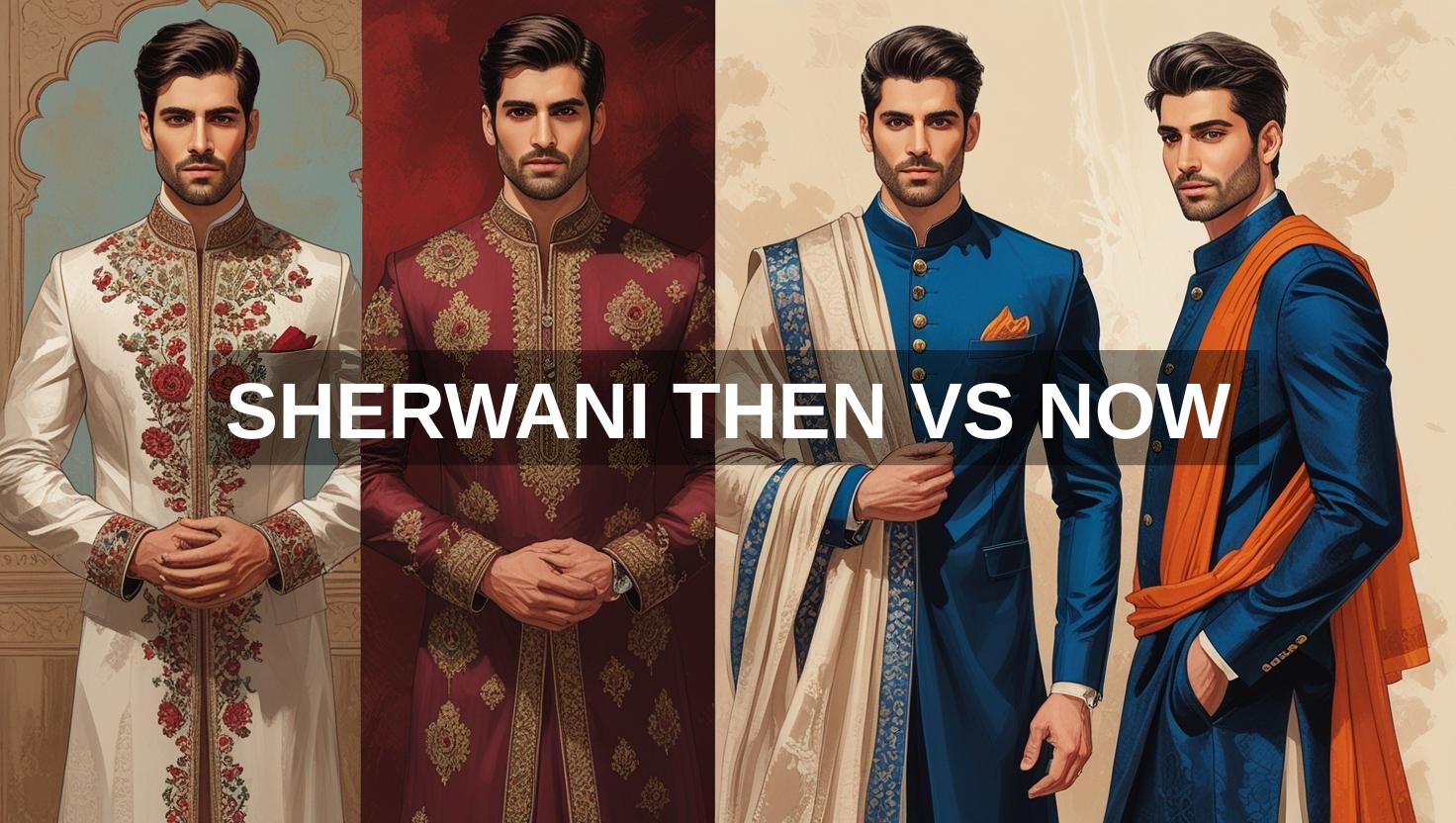Blog
Sherwani Then vs Now: How Traditional Menswear Has Evolved Over the Years
When you think of Indian weddings, the sherwani instantly comes to mind — a symbol of elegance, royalty, and cultural pride. Over the decades, this traditional men’s garment has seen a remarkable transformation. From its royal Mughal roots to its modern-day designer revival, the sherwani has adapted beautifully while maintaining its regal essence.
Let’s take a closer look at how sherwanis have evolved over the years — from “then” to “now.”
1. The Fabric Story: From Heirloom Richness to Comfort-Driven Elegance
Then:
Earlier, sherwanis were crafted from heavy fabrics like silk, brocade, or jamawar. They were richly woven, often passed down generations, and worn only on extremely special occasions. The designs emphasized opulence, even at the cost of comfort.
Now:
Today, the modern man prefers lightweight yet luxurious fabrics such as georgette blends, velvet, raw silk, and linen-silk. Designers have started focusing on both aesthetic and wearability, making it easier for grooms to carry sherwanis throughout long events with ease.
2. Design Aesthetic: Traditional Grandeur vs Contemporary Minimalism
Then:
Traditional sherwanis featured dense embroidery, mostly in zardozi, zari, and heavy thread work. Motifs were inspired by Mughal architecture and nature, with ornate buttons and lavish embellishments dominating the look.
Now:
Minimalism has found its way into ethnic fashion. Today’s sherwanis are more streamlined, often featuring clean lines, asymmetrical cuts, and subtle embroidery. Modern grooms are opting for tone-on-tone patterns, embroidered collars, or understated detailing that speaks of refined taste rather than flashy extravagance.
3. Color Palette: From Royal Reds to Muted Pastels
Then:
Deep reds, maroons, golds, and ivory were once considered the ideal wedding palette for sherwanis — symbolizing richness and cultural significance.
Now:
Today’s fashion-forward men experiment with pastels, blush pinks, mint greens, powder blues, and even metallic greys and navy tones. These modern shades align with destination weddings, daytime ceremonies, and themed celebrations — proving sherwanis don’t always have to stick to traditional hues.
4. Silhouettes and Styling: The Evolution of Fit
Then:
Earlier sherwanis had a loose, robe-like fit, often worn with churidars and occasionally layered with a stole or turban. The look was meant to reflect royal stature rather than body shape.
Now:
Contemporary sherwanis are tailored for the modern physique — structured shoulders, tapered waists, and personalized fits are key. They’re styled with everything from dhoti pants and cigarette trousers to asymmetrical kurtas, offering more freedom and versatility in silhouette.
5. Accessories: From Traditional Necessity to Fashion Statement
Then:
Accessories like safa (turban), mojris, brooches, and swords were an essential part of the sherwani ensemble — signifying heritage and status.
Now:
While many accessories remain, they’ve been reimagined as fashion statements. Grooms now opt for minimal brooches, pocket chains, embroidered stoles, and designer footwear that complements the outfit without overpowering it.
Conclusion: A Journey from Heritage to Haute Couture
The sherwani has made a stunning journey — from being a traditional heirloom outfit to a customized fashion piece that reflects personal style, culture, and modernity. At Mijaaj, we celebrate this transformation by blending the rich legacy of Indian craftsmanship with modern tailoring and trend-forward designs.
Whether you’re a groom looking for a timeless outfit or a guest wanting to make a statement, there’s a sherwani waiting for you — classic or contemporary, or a perfect mix of both.
Ready to explore our latest sherwani collection?
Visit Mijaaj store or follow us on Instagram for the latest drops and styling inspiration.


